Last Updated on July 30, 2023 by Soumya
The Middle Ages were a remarkable period in Europe’s history. It was during the middle ages or the medieval period that the idea of a culturally distinct Europe began to take shape. These were the times of Papal Monarchy and the Crusades. Also when Gothic art and architecture were born. And the concept of a European university came into being. The medieval period in Europe was vibrant and turbulent at the same time. It set the stage for Europe’s Golden Age of Renaissance.
However, even though so much happened during the middle ages, this period is quite easily overlooked. By travelers. By historians. By students of European culture.
The reason?
Middle ages were sandwiched between the more illustrious Roman Empire and the glorified era of European Renaissance. So, even though we have wandered through the streets of ancient Rome and Athens and ambled down the alleys of Florence, we hardly know of the Sibiu’s or the Besalu’s in Europe. Yes, I am talking about these utterly beautiful medieval towns in Europe that you have barely heard of. In this post, I will take you on a trip of 26 Medieval European Towns that are so stunning they will leave you craving for more!
Busy now? Pin our post and come back to it later!
Please note: This post may contain affiliate links which means I may earn a commission if you make a purchase by clicking a link on this post. This will be at no additional cost to you. Affiliate links help me keep this website up and running. Thanks for your support!
Here are the 26 Most Beautiful Medieval Towns in Europe.
In order to create this exhaustive list of the best medieval cities in Europe, I reached out to historical travel experts from around the globe. I took their recommendations and incorporated their choices to come up with this humongous list of 26 charming medieval towns/cities across Europe. Some of them are big. Some are tiny. Based on where you are traveling in Europe, you can easily include a few in your European itinerary. And all in your European bucket list! So, let’s get started.
- Also Read: The Top 10 European Capitals of Culture
1. Obidos, Portugal
Editor’s Choice

Taking a walk down Rua Direita and venturing down some smaller alleys is the best way to spend a day in Obidos – one of Europe’s most picturesque medieval towns
Obidos was one of our top choices when we were trying to figure out our 10-day Portugal itinerary. It is an absolutely picturesque medieval town in Central Portugal and looks straight out of a postcard.
Inside the walled city, you will find a well-preserved medieval castle and fort ramparts that you can climb on for stunning vistas. There are many attractive churches that you can peep into – Santa Maria Main Church, the Misericórdia Church, the Church of São Pedro. But I got the greatest pleasure by walking the narrow but main street of Obidos, Rua Direita. The entire street is flanked by whitewashed houses bordered by yellow and blue paint. And adorned by geraniums and bougainvillea. Many of them house art galleries and quaint souvenir stores. Feel free to venture off the main trail and into some of the smaller streets free of crowds. You will get your precious Instagram shots here.
Obidos is easily done as a day trip from Lisbon though staying overnight within the walled city has its own charm. I would highly recommend staying at Pousada Castelo de Obidos, a quirky accommodation housed inside the 14th-century medieval castle of Obidos. You can get a room with stone walls, four-poster beds, and chandeliers. Feel like royalty for the night.
Recommended: 24 Stunning Pictures of Obidos
2. Sighisoara, Romania
Recommended by Arnav from Eat | Travel | Live | Repeat

Sighisoara Romania – One of the most photogenic medieval towns in Europe
Located in the historic region of Transylvania in Romania, Sighisoara is popular for it’s well preserved walled old town, which is listed by UNESCO as a World Heritage Site. It is considered to be one of the best-preserved medieval citadels in all of Europe. In 1999, the Historical Centre was officially inscribed as a UNESCO World Heritage Site and recognized as a relic of Transylvanian Saxon culture.
It might be an easy task getting lost in the colorful streets of Sighisoara. But did you know that the Birthplace of Vlad Tepes aka Count Dracula is in the Old town of Sighisoara! And guess what, you can eat a hearty meal in the restaurant which has now opened up in the bright yellow painted birth home of Dracula. You can also pay an extra fee to be shown into young Vlad’s bedroom which he slept in until the age of four.
What really grabbed my attention, as I was strolling along the cobbled stone lanes were the pastel-colored houses and buildings. Each had a unique character of its own. Some of the old houses had been renovated into AirBnB’s, quaint restaurants, and cafes. Some places leave long-lasting impressions on a traveler and the medieval town of Sighisoara in Romania did exactly that.
3. Tallinn, Estonia
Recommended by Maggie from The World Was Here First

Tallinn – One of the best-preserved medieval towns in Europe
If you’re looking for the perfect medieval city to visit in Europe, there is no denying that Tallinn is arguably your best choice. Known for being one of the best-preserved medieval capitals in Europe, Estonia’s capital city looks like it’s straight out of a fairy tale. And not only is it absolutely beautiful, but also there is plenty of fun and interesting things to do in Tallinn that will keep you occupied for a number of days.
Tallinn’s Old Town is its most famous feature, with its medieval city walls, charming cobbled lanes, and iconic red roofs. Its compact nature and definitive medieval charm make it distinct from other Baltic capitals like Riga or Vilnius. While the Old Town is beautiful and easily seen in the span of just one day, Tallinn really deserves a few days to be able to do the city justice.
If you’re interested in the medieval history of Estonia’s capital, then spend one day exploring the Old Town and visiting some of the museums. For another day, head outside of the city walls and take the time to wander through the historic, hip district of Kalamaja and check out the trendy Telliskivi creative city. On the third day, make sure you learn about Estonia’s recent communist history by visiting relics like Linnahall and the Estonian History Museum. Or learn about its maritime history by visiting the Seaplane Harbour Museum.
Tallinn has a tonne to offer visitors from its incredible medieval old town to its hip and artistic modern culture and it makes for the perfect European city break.
4. Perast, Montenegro
Recommended by Emily from Wander-Lush

Perast Montenegro – One of the prettiest medieval towns of Europe
Stunning medieval towns are a dime a dozen on Montenegro’s Bay of Kotor. While well-known walled cities such as Kotor and Budva attract busloads (or more accurately, boatloads) of tourists, the pretty little town of Perast is relatively quiet. All white Venetian buildings set against a dramatic mountain backdrop, it really is one of the most beautiful medieval towns in Europe. Perast is located on the waterfront 12km north-west along the Bay from popular Kotor.
Perast’s history dates back to the Neolithic period.
But it was during medieval times, the 1300s specifically, that the settlement really flourished. Back then, Perast was a thriving fishing village. Under Venetian rule, it was transformed into a strategic trading port and reinforced with fortresses and defensive towers, the remains of which can still be seen today.
The rest of the old town is characterised by open stone plazas that face onto the water, a maze of back streets, and crumbling bell towers nestled in the green hills above the town. Perast is very petite and can be circumnavigated on foot in an afternoon.
Two islands, St. George and Our Lady of the Rocks, lie just off the coast. The first is off-limits to tourists. But you can visit the second, the only man-made island in the Adriatic by boat.
5. Besalu, Spain
Recommended by Mar from Once In A Lifetime Journey

Besalu Spain – One of Europe’s hidden gems
Besalu is a tiny medieval town located about a 1.5-2h drive from Barcelona. Therefore, it makes for one of the most perfect day trips from Barcelona. This tiny enclave with less than 1,000 inhabitants was founded in the 8th century and became one of the last remaining independent Catalan Counties in the 9th century. Besalu was under the rule of a famous count, Wilfred The Hairy, whose empire expanded almost all of modern-day Catalonia.
The village is well preserved except for the Jewish Quarter which was partially destroyed after the expulsion of all Jews from Spain in the 15th century. However, you can still see the Jewish bathhouse which is one of the few remaining in Europe from the time.
Besalu is accessed by a picturesque and famous 12th-century Romanesque bridge over the River Fluvia that is a favorite to visitors. The stone bridge provides an idea of what the fortified village must have looked like and how important it was to have strong defensive structures at the time. The village is entirely pedestrian and you can wander its cobblestoned narrow alleys, sit down at the main square to people-watch, or visit the famous St. Peter Monastery and church.
6. Orvieto, Italy
Recommended by Annabel from Smudged Postcard

The beautiful mosaic-encrusted cathedral of Orvieto Italy
There are so many hilltop medieval towns in Italy, it’s difficult to know which ones to visit. Orvieto without doubt should be somewhere near the top of your list. Set high on an ancient tufa plateau overlooking the rolling Umbrian hills, Orvieto is a sight to behold.
The highlight of a visit to Orvieto is taking in the city’s magnificent mosaic encrusted cathedral with its decorative rose window on the main façade. Dating back to the 14th century, the cathedral is a blend of Gothic and Romanesque styles and is visible from many miles away. The cathedral houses some significant frescos by painters including Luca Signorelli, a forerunner to Michelangelo.
If you’re visiting Umbria with kids, you’ll no doubt make a beeline for Orvieto’s 13th century Torre del Moro, a 47 metre tower with 250 steps which can be climbed for views over the city and beyond. The best place to recover from the climb is the city’s medieval heart: Piazza della Republica, where you can admire the churches and elegant palazzi while enjoying a well-earned coffee or gelato.
As with many medieval towns in Italy, much of the city center is pedestrianized which makes exploring its narrow winding lanes a real delight. Although a predominantly medieval city, Orvieto’s roots lie far deeper, quite literally. Beneath the streets is a network of caves dating back to Etruscan times.
Recommended: The Most Amazing Day Trips from Rome
7. Caceres, Spain
Recommended by Juergen from Dare 2 Go

Caceres Spain – One of the lesser-known medieval towns in Europe
The beautiful town of Caceres in Spain was founded by the Romans. When they left, it lost its importance until it experienced a revival under the Moors. Most of today’s enormous town wall is of Moorish origin.
After the defeat of the Moors, the fortified centre attracted many influential and wealthy family clans. Each one tried to outdo their neighbour by building lavish palaces with tall towers, often fortified as a defence during family feuds. Finally, Queen Isabel the Catholic intervened and ended the construction of fortified buildings, which crowd this small town.
Many of these magnificent historic palaces can be visited today.
Some charge a small entrance fee; others are open to the public as upmarket restaurants and hotels. The historic center of Caceres is so densely built-up that vehicle traffic is only possible in a few lanes, allowing most to visitors to explore at their leisure on foot. The narrow cobbled lanes are often shaded by tall walls of medieval buildings.
Caceres is one of a few World Heritage-listed historic towns in Europe that have yet to succumb to the drastic changes invoked by tourism. Its remote location, in the western Extremadura province of Spain, helps to keep the numbers of visitors down, despite the town’s new-found acclaim as a filming location for Game of Thrones. The best time to visit Caceres is Spring or Autumn, as the inland of Spain can get very hot in the middle of summer; winter days are often sunny but chilly.
8. Lyon, France
Recommended by Noel from Travel Photo Discovery

Lyon France with its imposing historic center is one of the prettiest medieval towns of Europe
If you are into visiting medieval towns and cities then put Lyon, France on your list of places to visit in Europe. The city of Lyon has a magnificent historic district that is intact and beautiful to explore. Located on the opposite side of the Saone river is the medieval center called the Vieux Lyon or the medieval quarter. You’ll find historic buildings, cathedrals, stunning churches, and vibrant squares to explore and enjoy in the quarter.
The main imposing landmark is the Cathedral of St. John in the St. Jean quarter, a beautiful square marked with gorgeous buildings lined around the square. As you pass through cobbled streets filled with art galleries and boutique shops, you will find artisanal crafts, foods, and finished products proudly displayed everywhere. You’ll also find lovely bakeries, cafes, and food stands where you can sample some of the local fare and delicious foods of the area.
You can take a funicular or climb up to the top of the hill where the basilica of Notre Dame de Fourviere is located with panoramic views of the city. The surrounding landscape is absolutely breathtaking. When you come back to the historic center, you’ll find that in the latter half of the afternoon all restaurants expanded into squares and streets. The mood is festive and lively with bands, live performances, and other cool entertainment that stretches late into the night. Check out my post on the first impression of Lyon here for more images and inspiration to visiting this wonderful medieval city.
9. Gruyeres, Switzerland
Recommended by Maureen from So Many Places! So Little Time!

The beautiful Gruyeres Castle Garden in Switzerland
Our favorite medieval town in Europe is Gruyeres in Switzerland. It is set high on a hill with the Swiss Alps in the background. It is surrounded by green farmland and tucked next to a very interesting medieval castle. Gruyeres Castle was built back in the 13th century and within the castle, which is open to the public, there are interesting and well displayed historical collections and special exhibitions. There is also a multimedia show that takes you on a journey from the Middle Ages to modern times. It’s a must-see if you’re in the area. Alongside the castle is the small, walled, medieval village called Gruyeres.
Gruyeres was declared the most beautiful village in western Switzerland in 2014!
It has been amazingly well preserved and it is a joy to wander through the cobblestoned traffic-free village and explore its colorful shops, chalets, and cafes. I found the medieval doors throughout the village fascinating.
The cafes specialize in traditional local food from the Fribourg Pre-Alps area such as fondues, rostis, and dishes from the Bénichon menu- a centuries-old, traditional Fribourg celebration. There is a Fondue Academy that gives visitors the chance to learn about the art of fondue preparation by master cheesemakers. If you’re a chocoholic you can reserve a place in a workshop at the Chocolaterie de Gruyères. I am addicted to the local raspberries and meringues with the local, very delicious, and addictive double cream. And of course, because it’s Gruyeres, there is lots of cheese! Fifteen minutes of pleasant walk down the hill from the castle and the village is the Gruyeres Cheese Factory which is also worth a visit.
10. Sighnaghi, Georgia
Recommended by Ellis from Backpack Adventures

Sighnaghi in Georgia, famous as the City of Love, is one of Europe’s prettiest medieval cities
Sighnaghi in Georgia has always been a small, but important town because of its strategic and scenic location. It’s on the top of a hill overlooking the vast Alazani valley and the snowcapped peaks of the Caucasus mountains in the distance. As beautiful as the view on the mountains might be, they also posed a certain danger as mountain tribes often attacked villages in the area. Sighnaghi was therefore built as a fortification to protect its small population of merchants and craftsmen.
Nowadays it is a popular tourist destination because it is in the heart of Kakheti, also known as Georgia’s wine region. Sighnaghi makes a great place to explore the picturesque landscapes with its vineyards and ancient monasteries. Sighnaghi itself still has a medieval atmosphere. Some of the old fortification walls are well preserved. It’s like a journey back in time if you walk through the cobblestone streets with the pastel-colored houses. Here you will meet the knitting ladies that make nice handmade souvenirs to bring home.
The beauty of the small town also attracts people from within Georgia where it is famous as the city of love. Many young couples specifically come to Sighnaghi to get married. With its scenic surroundings, great food and friendly people Sighnaghi indeed has lots to offer for both locals and foreigners alike.
11. Guimarães, Portugal
Recommended by Sam from My Flying Leap

View of the Guimaraes Castle, another interesting medieval town in Portugal
Though it may not be a well-known Portuguese city, Guimarães is a popular day trip from Porto. This quaint UNESCO World Heritage Site was founded in the 9th century and its legacy is that it is known as the birthplace of Portugal.
The historic center is lined with beautiful and well-maintained medieval buildings that seem to echo with times from the past. And it’s a treasure trove with many beautiful historic sites to see like Guimarães Castle, the Palace of the Dukes of Braganza, as well as some stunning churches with lovely gardens. There are also several bustling and picturesque squares lined with restaurants with outdoor seating. Get a bite in Oliveira Square and enjoy the view of the Monument of Salado as well as the Church of Our Lady of Oliveira, two National Monuments.
One of the most popular things to do is to ride the cable car up Penha Mountain for incredible views of Guimarães. You can drive to the top of the mountain, but why would you? And while you’re there, check out the striking Sanctuary of Penha. Porto which is one of the most popular cities to visit in Portugal is nearby. A day trip to Guimarães from Porto is ideal to see this incredible medieval city.
Recommended: 21 Best Things to do in Porto
12. Mdina, Malta
Recommended by Alexander from Gourmand Trotter

Walking down the narrow, medieval streets of Mdina Malta gives a strange eerie feeling!
Mdina is the historic capital of Malta, founded by Phoenician settlers in the 8th century BC. It was later renamed to Melite by the Romans. Mdina is a fortified city where the walls are still intact although the city used to be larger before the Byzantine and Arabs occupied Malta where it was reduced into the size of today. It remained as the Maltese capital until the Order of St. John made Birgu the new capital in 1530.
Mdina is one of the best-preserved old cities with a medieval character.
In the 18th century, several baroque buildings were added as well, and they are still standing. It’s a major tourist attraction in Malta and has been given the nickname “Silent city” due to its vibrant and important past while it remains quiet these days, except for the tourists strolling the historic streets.
Mdina became even more famous after being the backdrop of Game of Thrones, and it’s absolutely worth visiting. From the city, you can also enjoy scenic views that stretch several kilometers. It’s still a hidden gem though for many, and you’ll feel a sense of mystery and being inside a medieval movie while walking around Mdina. There is something eerie about the place, although it’s very beautiful at the same time.
13. Prague, Czechia
Recommended by Veronika from Travel Geekery

The beautiful city of Prague – One of the most famous medieval towns of Europe
The beauty of today’s Prague, which draws eager tourists from all over the world, was created predominantly in the Middle Ages. Přemyslid Dynasty ruling Bohemia from around 900 to 1300s built the masterpieces – The Prague Castle and The Vyšehrad Fortress.
The Prague Castle was large from the beginning and belonged to one of the biggest inhabited fortresses in Europe. Vyšehrad, a fortified settlement on the opposite side of the Vltava River, was built two centuries later and became a temporary seat of Czech rulers. While the Prague Castle receives thousands of tourists every day, Vyšehrad situated on a standalone hill, is a lot emptier.
I can highly recommend strolling through Vyšehrad and enjoying the wonderful views of Prague.
In the 13th century, Old Town and Malá Strana (Lesser Quarter) were founded and the whole Hradčany (the Castle district) and the New Town came into being in the 14th century. The iconic Charles Bridge, which belongs to Prague’s top attractions was built in the 14th century after an even older bridge from two centuries ago, called Judith Bridge, collapsed.
Prague’s Astronomical clock was first installed in 1410. While in many parts of Europe, it was the time when medieval times were about to transform into Renaissance, the Czech lands officially stayed in the Middle Ages until the 15th century.
14. Vyborg, Russia
Recommended by Anna from Travel Cultura

Vyborg in Russia, nicknamed the Pretzel City, is another impressive medieval town in Europe
Let’s go wander to Vyborg, a medieval city in the Leningrad Region of Russia. Vyborg is a Russian and European-style city at the same time. During long centuries, it changed hands a few times — it belonged to Sweden, Finland, and Russia.
The main landmark of Vyborg is the medieval castle. This is the oldest and the most picturesque place in the city. Vyborg Castle is a fortress whose foundation dates back to the 13th century. The tall white tower of St Olav is the symbol of the city. If you visit Vyborg, climb to the observation deck at the top of the tower and enjoy a marvelous view of the city.
After visiting the main must-see places, go wander in the historical part of Vyborg. Charming Vyborg’s streets hide lots of old buildings. For instance, head to the Round tower (which was a part of the medieval town wall) and find some nice souvenirs at the neighborhood market palace.
Don’t forget to try the local specialties. Pay attention to famous Vyborg’s pretzels. They were so loved and well-known (and tasty) that Vyborg even received the nickname “Pretzel City”! Keep in mind that Vyborg is situated in the Leningrad Region. That means that citizens of most European countries can get a free electronic visa for visiting Vyborg.
15. Vernazza, Italy
Recommended by Monique from Trip Anthropologist

The beautiful seaside medieval town of Vernazza in Italy
Medieval towns are everywhere in Europe and they are delightful to explore – winding streets and low archways that empty onto lively squares with stately homes and churches in abundance. What is different about Vernazza on Italy’s Cinque Terre is that it faces the sea. It is built around a small rocky harbor and is surrounded by one of the world’s most beautiful natural parks.
Vernazza was settled in just over 1000 years ago but it wasn’t fortified until the medieval era to protect the citizens of the Genora Republic and their ships from Saracen pirates. Of the five stunning villages of the Cinque Terre, only Vernazza has a popular harbor. This means it needed to protect itself against attacks from the sea. The Belforte Tower was built in the mid-1500s as the town’s primary defense against the pirates. The ruins of the tower now house an astonishing restaurant.
Today Vernazza is a breathtakingly beautiful bucket list destination. It boasts a typical Genoan layout of staircases and winding lanes that open on to piazzas, squares, and wide avenues. Its ruined tower, 1000-year-old Doria Castle, medieval and Renaissance seaside church, and riotously colored homes make it the most popular choice for visiting the world heritage-listed Cinque Terre.
16. Ohrid, North Macedonia
Recommended by Cassie from Cassie The Hag

The Church of Sveti Jovan at Kaneo – Ohrid’s most photographed location
Ohrid, located in North Macedonia, is unique in being listed as both a cultural and natural UNESCO World Heritage Site. Famously home to hundreds of churches despite its small size, Ohrid’s star attraction is Lake Ohrid itself. The lake is 300 deep and 34km wide and, at 3 million years old, is one of Europe’s oldest lakes. It will be a constant and serene backdrop to your time in Ohrid.
One of Ohrid’s most photographed attractions is the Church of Sveti Jovan at Kaneo (pictured above).
It is a 13th-century church and an ideal sunset spot. There are many Byzantine-style Orthodox churches across the Balkans, but this one stands out due to its clifftop position. From here, you can walk through the woods to Clement Church on Plaosnik hill, built-in 893.
While strolling around Ohrid’s old town, I couldn’t help but notice the dominating Samuel’s Fortress. In the 11th century, Ohrid was briefly under the Slavic rule of Car Samuel and the city was an important city within the Balkans. Today, though far from the fierce fortress it once was, the location is striking. If you walk around the ramparts you’ll have a panoramic view of Ohrid.
Perhaps the oldest sight is the Ancient Theatre of Ohrid. Visiting the theater is one of the most fascinating things to do in Ohrid. According to local tourism, this stunning amphitheater was built in 200BC and was once a place of performance, gladiator fights, and the execution of Christians by Romans. Locals did not like this and buried the site after the demise of the Roman empire. It was accidentally rediscovered in the 1980s!
17. Ghent, Belgium
Recommended by Tea from Culture Tourist
Located in the Belgian region of Flanders, Ghent is one of the most beautiful medieval towns in Europe. With many of its narrow cobbled streets, old canals, and picturesque historic houses, each decorated with unique gables, you’ll feel like you’ve stepped back in history. Since Ghent was quite an important town during the Middle Ages, you’ll find here some fantastic monumental historic buildings, too.
The Cathedral of Saint Bavo is home to one of the most famous medieval pieces of art – recently restored Ghent Altarpiece painted by Jan van Eyck. Just opposite to the cathedral are some other amazing medieval buildings. The Belfry which is 91 meters tall was built back in the 14th century. You can climb to the top and have a fantastic view of the historical center of Ghent. Another place where you can experience how life looked during the Middle Ages is the well preserved 12th-century Gravensteen Castle. It was once the home of the Count of Flanders. Today it is a lovely museum,
Although today it’s a rather small town, Ghent was one of the largest cities in Europe in the Middle Ages. During the 13th century, Ghent was the second biggest town north of the Alps, just after Paris. A walk through Ghent’s historic center is a prudent reminder of its glorious past.
18. Sibiu, Romania
Recommended by Jade from The Migrant Yogi

Sibiu Romania – One of the most beautiful medieval towns in Europe
Sibiu, Romania may not be the first medieval city that comes to mind when planning a visit to Europe. Yet, this small city in Southern Transylvania will captivate its visitors with everything it has to offer – food, culture, history, and of course, its people.
Sibiu was originally inhabited by Saxons during its development, giving it a distinctly Germanic feel in contrast with the rest of Romania. The buildings of the Old Town are painted in varying shades of Easter eggs, giving it an overall cheerful feel and a nice contrast to its iconic red-tiled roofs.
The winding cobblestone streets are littered with tunnels and secret stair passages that connect the upper and lower towns. Here you’ll find a wide array of museums – Pharmacy, Steam Locomotive, Romanian Art, Saxon Ethnography, Natural History, as well as an open-air museum complex (just to name a few), a thriving culinary scene, as well as Medieval walls to trace the history of the city. There’s no shortage of things to do in Sibiu.
While Sibiu is still slightly under-the-tourist-radar, in 2007 it was named Cultural Capital of Europe (alongside Luxembourg) and in 2008, Forbes’ declared Sibiu one of the most Idyllic Places to Live in Europe. Since then, the city has seen substantial development, but still maintains its medieval charm. A great introduction to Romanian culture, Sibiu should be on everybody’s list for a journey into Transylvania.
Recommended: Top 10 European Capitals of Culture that you must visit
19. Leon, Spain
Recommended by Campbell & Alya from Stingy Nomads
Leon located in the north of Spain in Castile & Leon is one of my favorite medieval towns in Europe. The history of the city dates back to 29BC when the Romans established a military settlement here. The settlement kept growing till 74AD when the most parts of the Iberian Peninsula was occupied by the Moors. The brightest period in Leon’s history started in the 10th century. In 910 Leon became the capital of The Kingdom of Leon and one of the most important cities in Medieval Spain.
Leon is considered to be the cradle of Parliamentarism in Europe.
In 1188 it hosted the first Parliament in European history. For centuries Leon has been an important part of the Camino Frances, a pilgrimage route to Santiago de Compostela.
Many religious constructions that were built in the city in the Middle Ages remain well-preserved till today. The Cathedral of Leon is one of the most impressive medieval cathedrals in Europe. It was built between 1205 and 1301. The Cathedral is famous for its stunning stained glass windows. Sunlight penetrating through the windows creates a magnificent effect inside the cathedral. One can spend hours inside the cathedral admiring its interior. Among other significant medieval buildings are the Basilica of San Isidoro, Convent of San Marcos, and the Church of San Salvador the oldest church in the city built in the 10th century.
20. Cesky Krumlov, Czechia
Recommended by Allan from It’s Sometimes Sunny in Bangor

Cesky Krumlov in the winters is such a pretty sight
The rather spectacular UNESCO World Heritage Site of Cesky Krumlov is located beneath the backdrop of a 13th-century medieval castle in the South Bohemia region of the Czech Republic. It’s roughly 2-hours south of Prague. And while there is a new city, the Historic Centre of Český Krumlov, found straddling the banks of the passing Vltava River, feels worlds apart and almost lost in its old bohemian past.
The historic center of Cesky Krumlov is where you want to be.
The old town is in fact off-limits to vehicles, so parking is only on the outside of the citadel walls before crossing the rivers and bridges to find the main hotels, museums, and hospitality of the ancient town. And this is where the sightseeing is and could be potentially covered on a quick visit, including the State Castle and Chateau, the cobbled streets and squares, and the city’s quaint Bohemian charm.
Cesky Krumlov really comes to life in the evenings with merriment and bohemian feasts on the many medieval taverns. Plates of knedlíky dumplings, the Bohemian staple, are served alongside game meats like rabbit, venison, and boar. Not to forget the bar menu with meads, liquors, and grogs. And such cheap prices mean you’ll be feasting like kings.
Cesky Krumlov is located roughly 140-kilometres south of the city of Prague and can be covered on a day-trip where it takes between 2-3 hours (140 kilometers) by bus, car, or train. However, I would advise staying at least one night to experience the bohemian bars, restaurants, and nightlife of this quaint medieval town. It can also be busy during summers so I will forever recommend Cesky Krumlov in winter when it’s quiet and covered in snow.
21. Bergen, Norway
Recommended by Megan from Megan & Aram

Bergen in Norway rose to great prominence in the Middle Ages
One of my favorite cities in Norway is Bergen, a city I proudly called home for a period of my life. Many people only associate Norway’s history with the Viking-era, a group that was feared throughout much of Europe. However, the country has a much more substantial history and also made advancements during the medieval period.
Bergen was founded during the middle of the Medieval Period.
It quickly rose to prominence and became the capital of Norway for a short period of time. The city was a focal trading point that linked Northern Norway with the rest of Europe, with stockfish generating much of the city’s wealth at the time. During this era, the Bergenhus Fortress was constructed next to the harbor and is still one of the top things to see in Bergen today.
The fortress is one of the oldest still in existence in all of Norway. However, of all the medieval buildings, only the hall and one of the towers date back to their original constructions. Along with the medieval fortification, the waterfront is of huge cultural significance and has been granted UNESCO World Heritage status. The harbor dates back to the medieval times with the first piers being built in the 11th-century. Sadly, none of the medieval buildings or docks exist today and you can still envision the Norwegian royalty arriving by boat to be crowned in the city during the 13th-century. Bergen is one of the best places to visit for medieval history in Europe.
22. Rhodes Town, Greece
Recommended by Stephanie from Sofia Adventures

Rhodes Town – One of the most eclectic medieval towns in Europe
One of my favorite medieval towns is Rhodes Town in the Greek Isles. A UNESCO World Heritage Site, Rhodes Town was controlled by the Medieval Order of St. John from 1309 to 1523. According to the UNESCO’s Inscription, “With the Palace of the Grand Masters, the Great Hospital and the Street of the Knights, the Upper Town is one of the most beautiful urban ensembles of the Gothic period. In the Lower Town, Gothic architecture coexists with mosques, public baths and other buildings dating from the Ottoman period.”
When in Rhodes, you can actually stay in the Old Town! You can sleep inside a UNESCO protected architectural ensemble. You’ll also want to visit the former site of the Colossus of Rhodes, one of the seven wonders of the ancient world. While it’s no longer standing, you can see where it stood originally. If you’ve seen Game of Thrones, think the statue in Braavos which was inspired by the Rhodes Colossus. When you’re ready to hit the beach, you can explore the beaches in Rhodes Town or take a day trip to Lindos, a beautiful hillside town overlooking the water.
23. Padua, Italy
Recommended by Annalisa from Travel Connect Experience

Padua Italy – One of the most underrated but beautiful medieval towns in Europe
With such popular neighbors as Venice and Verona, the city of Padua is easily overlooked or considered a second option on a trip to Italy. Don’t let one of the most beautiful medieval towns in Italy go off your radar! Padua can be much more than a relaxed, less-pricey base from which you can explore the main cities in northern Italy.
Padua’s history goes back to the Pre-Roman age.
A legend says it was founded by the mythical Antenor, Aeneas’ cousin after they escaped the war between Troy and the Greeks. The great bloom of Padua’s economy and power happened during the Middle Ages around the year 1000 AD.
Some of the most interesting landmarks that you can admire in town date back to the 13th and the 14th centuries and are perfectly preserved. The Ragione Palace, the University of Padua, Cathedral of Saint Anthony, and the Scrovegni Chapel to name a few. These buildings hold stunning frescoes from Master Giotto and other artists of the time.
There are at least 8 places in Padua’s historical center where you can fill your eyes with medieval frescoes. Many of these places are free to enter. If you want to see all the frescoes, as soon as you arrive in town, ask for a map of the itinerary “Padova urbs picta” at the nearest tourist information center. And enjoy your day gaping at some awe-inspiring frescoes. Besides enjoying art and architecture, there are many more amazing things to do in Padua, so make sure to book your accommodation for 3 nights at least.
24. Zadar, Croatia
Recommended by Constance from The Adventures of a Panda Bear

Zadar Croatia – One of the oldest medieval towns in Europe
Zadar is a little known coastal European town offering some off-the-beaten-path sites to see. Spend a couple of days in Zadar, Croatia and you’ll get a chance to experience the oldest continuously inhabited city in the country.
Inside the fortified walls of the Old Town of Zadar, you’ll find a lot of interesting history. Zadar was originally founded in the 9th century BC and by 59 BC it became a Roman city. The city is still home to the largest Roman Forum ruins on the eastern side of the Adriatic.
During the Middle Ages, many churches were built in Zadar.
Two of the most famous ones include the Church of St. Donatus and St. Anastasia’s Cathedral. Both of them are located right next to the Roman Forum. The Church of St. Donatus was originally built in the 9th century and is best known for its unique circular form. The church was called the Church of the Holy Trinity but was rededicated to St. Donatus in the 15th century.
St. Anastasia’s Cathedral is also known as Zadar Cathedral and was originally built in the 4th and 5th centuries. In the 12th and 13th centuries, it was rebuilt due to heavy damage from the siege of Zadar by the Venetians and Crusaders. Visit the Bell Tower of St. Anastasia’s Cathedral for some of the best views of the city. You’ll be treated to an amazing vista of the Adriatic Sea and Kalelarga (Siroka Ulica), a road older than the city.
25. Lviv, Ukraine
Recommended by Yukti from Travel With Me 24*7

Lviv Ukraine – One of the most strategically located medieval towns in Europe
Lviv, the cultural and historic capital of Ukraine, flourished since the Medieval Ages due to a strategic trade route passing through it. Lviv was strategically located on the border of Ukraine, Poland, and Romania. Consequently, Lviv’s architecture was influenced by many different cultures.
The historic center of Lviv is famous for its medieval townscape architecture which was influenced by Polish, Ukraine, old Russian, Jewish, and Armenian styles. Plus, there are many narrow and cobbled stoned streets dedicated to different communities such as the Armenian quarter or Jewish quarter.
Lviv’s Old Historic town was listed as a UNESCO World Heritage Site in 1998.
The historic center consists of two components: a primary area including the castle and the city center and a secondary area consisting of the ensemble of St. Yuri’s Cathedral.
Lviv not only has great medieval architecture but also stunning natural beauty. Its location on the foothills of the beautiful Carpathian mountain range makes Lviv a must-have in your Ukraine itinerary. Lviv is also the gastronomy capital of Ukraine and you can enjoy local delicacies at the many unique restaurants while exploring the historic center.
26. Siena, Italy
Recommended by Amandine from Beaux Voyages

Siena Italy – a pretty medieval town in Europe that is often missed
Siena is often a missed city when in Tuscany. Indeed, while traveling around, people mostly go to Florence or Pisa but let me tell you that they are missing out. Siena is one of those many incredible Italian cities. So much so that the city center is a UNESCO world heritage site.
Siena is a medieval city with colorful narrow streets, a beautiful old main square aka Piazza del Campo where the Palio, a horse race in the heart of the city is held every summer. On this square, there is also the Fonte Gaia, a large fountain, and the Palazzo Pubblico. The city center also has a breathtaking Cathedral, Santa Maria Assunta, constructed in the 13th century, which is worth seeing from the inside and the outside.
One day is enough to see Siena. Plan to wander the streets, have that weird-looking pizza with fries, and plan a gourmet dinner at Antica Osteria da Divo where the specialty is truffle and other Tuscan dishes. To end your day, sit like the locals on the floor of the piazza or sit in one of the bars overviewing the main square. It is worth staying at night. There is a lot going on on this piazza.
Recommended: The best sights to see on your Florence sightseeing tour
So, here’s our amazing list of the 26 prettiest medieval towns of Europe.
How many have you visited? And how many more do you have in your Europe bucket list? Do let us know in the comments below. If there is a pretty medieval European town that we have not listed, do let us know. We would love to explore it on our next trip.





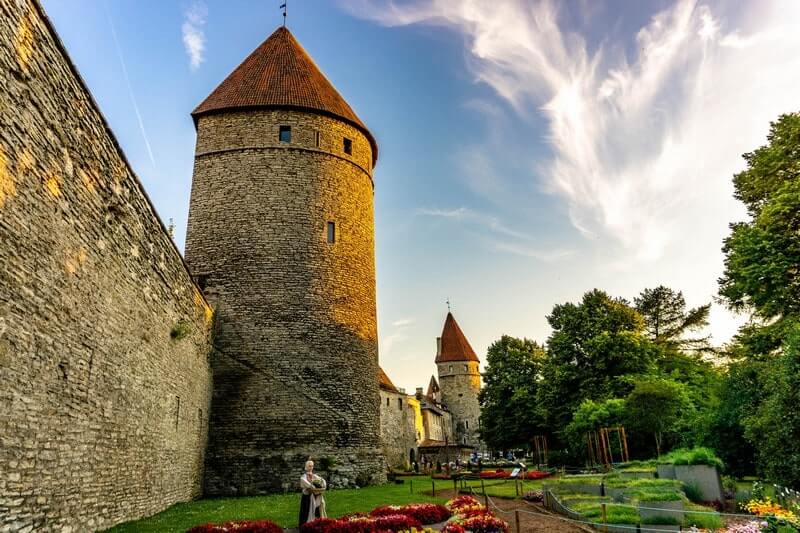

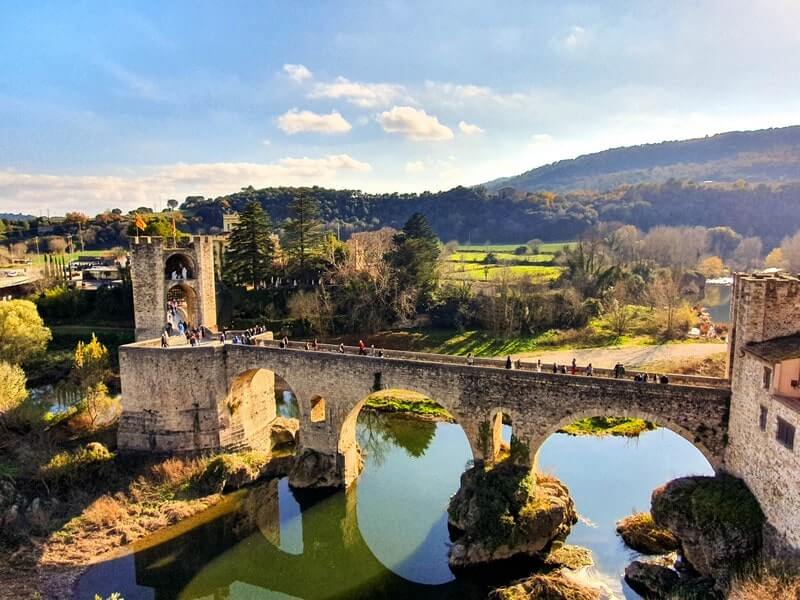
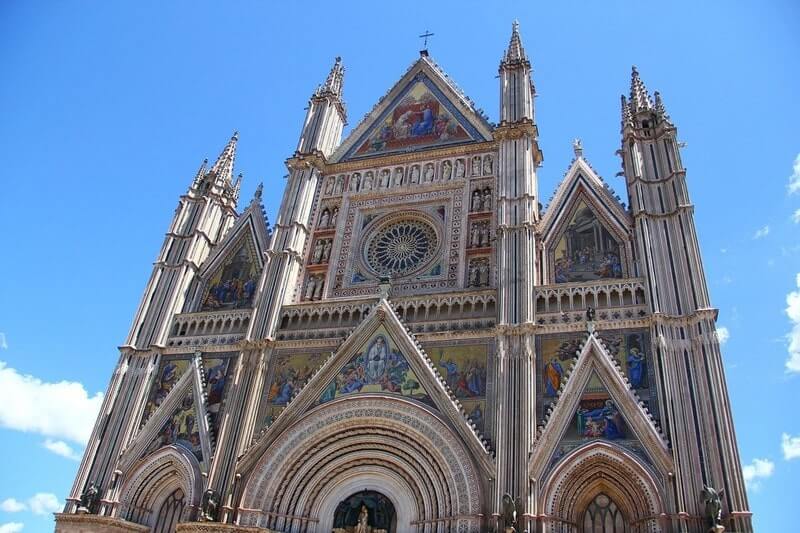
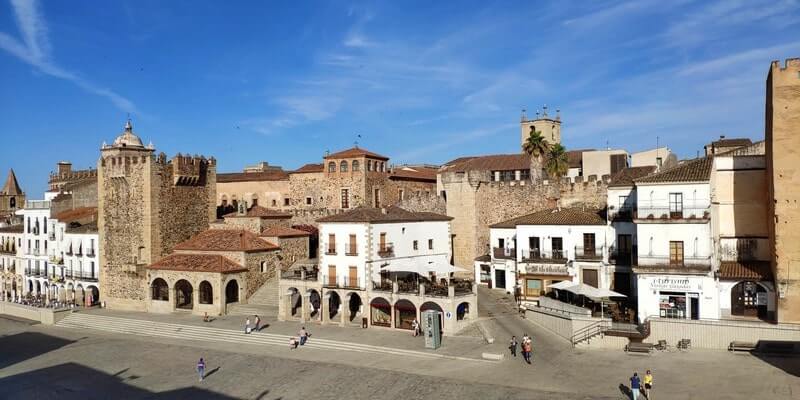
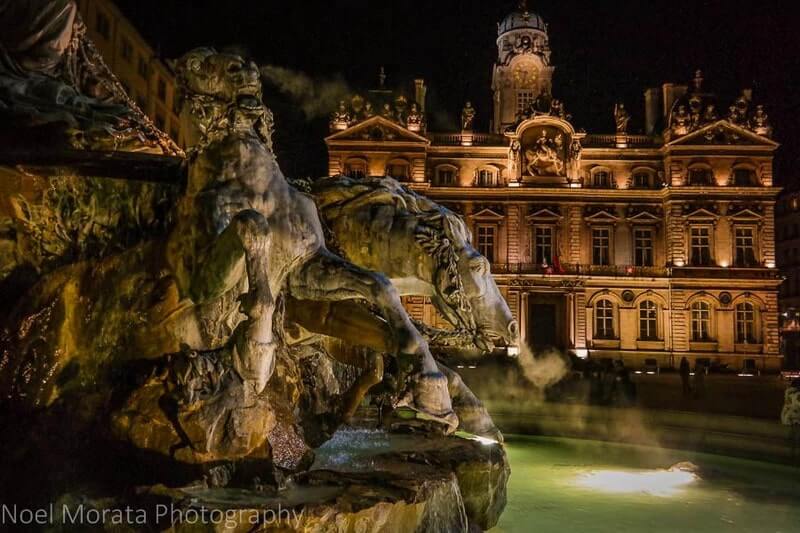

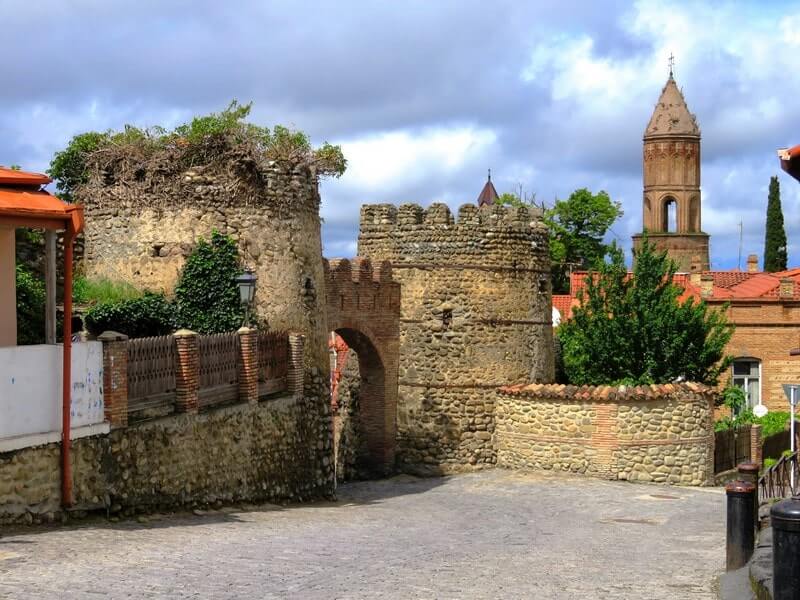
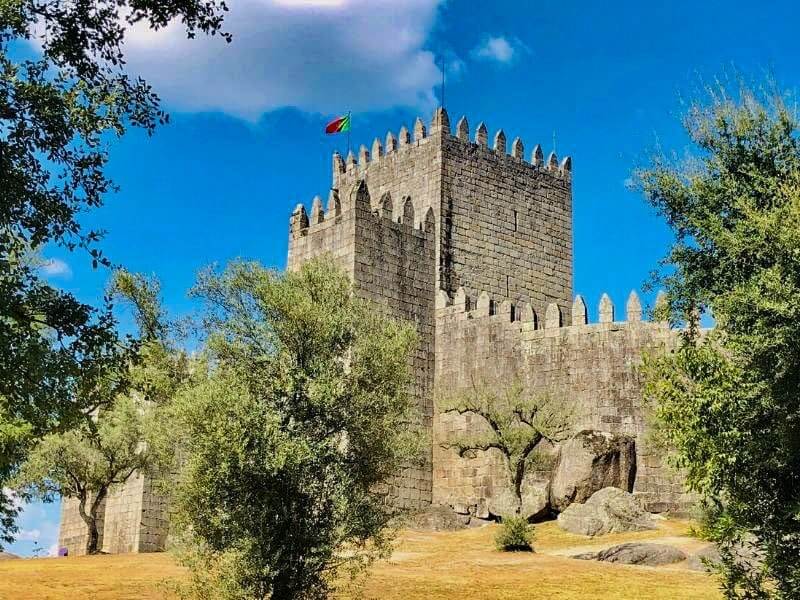
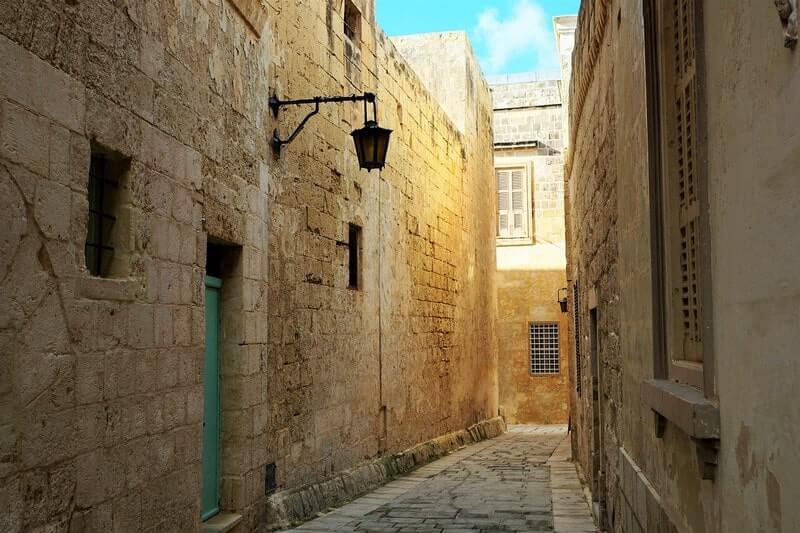
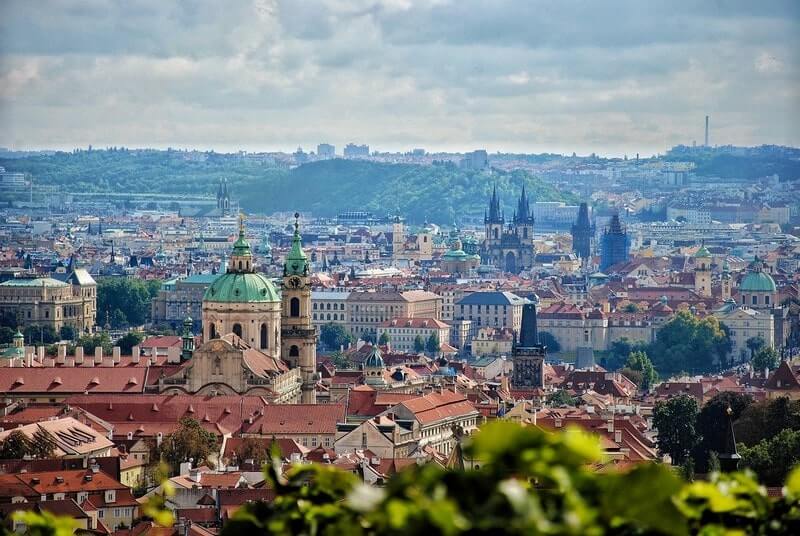
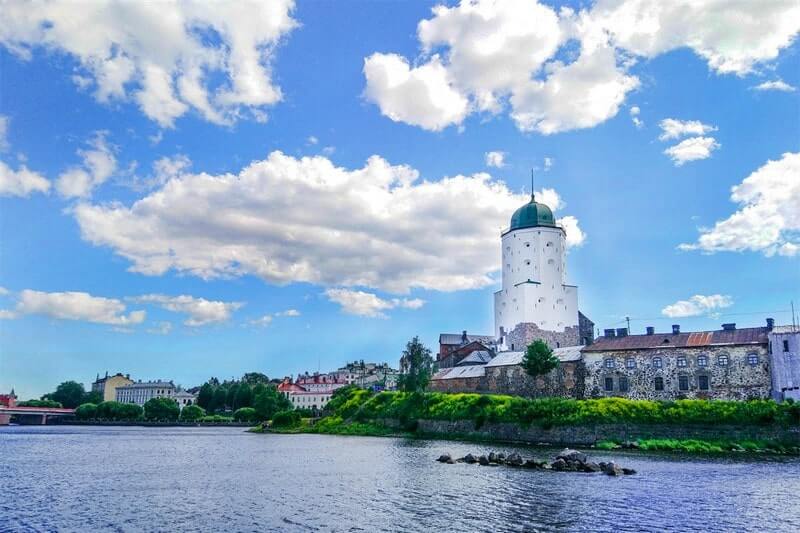
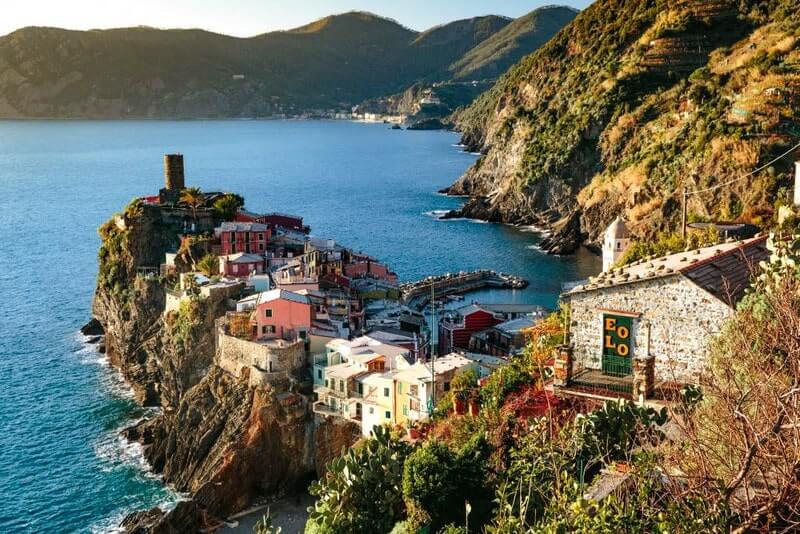



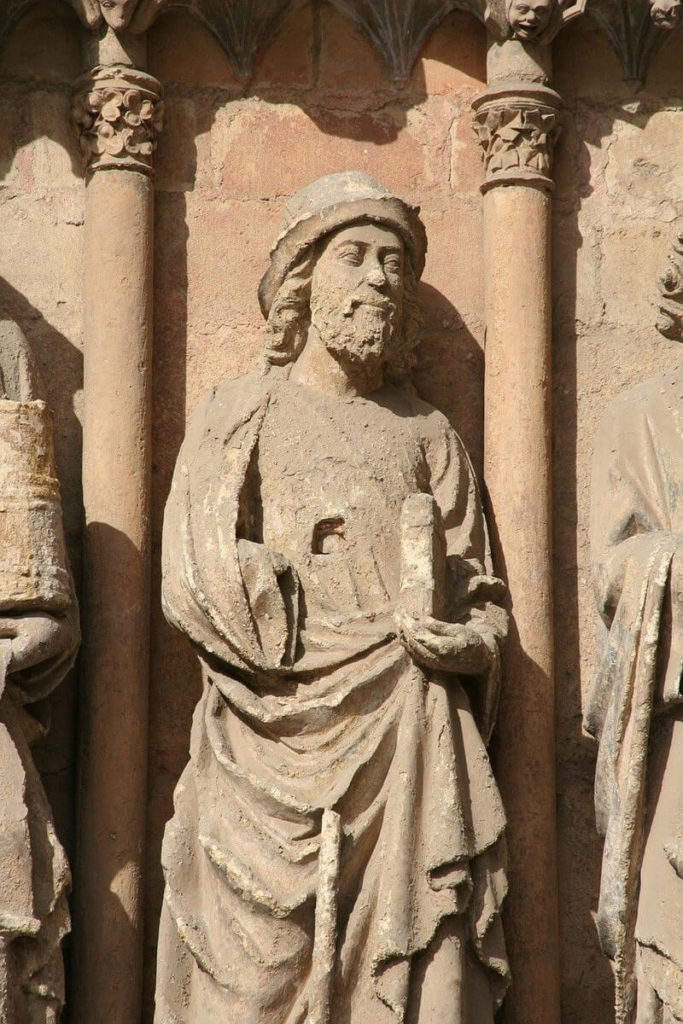


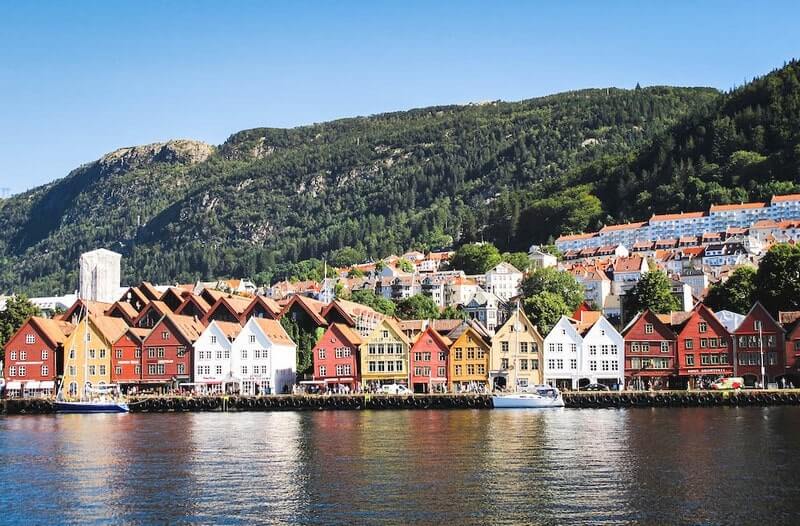
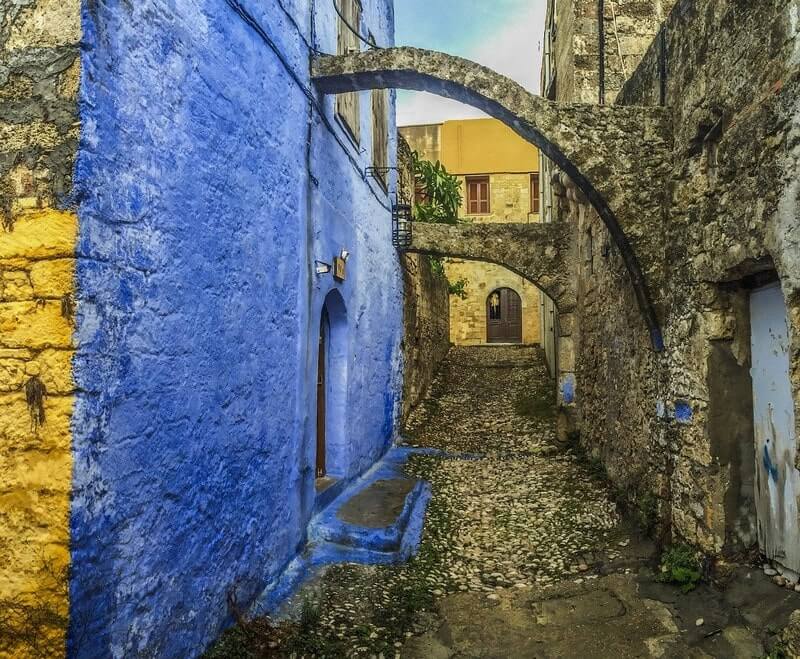
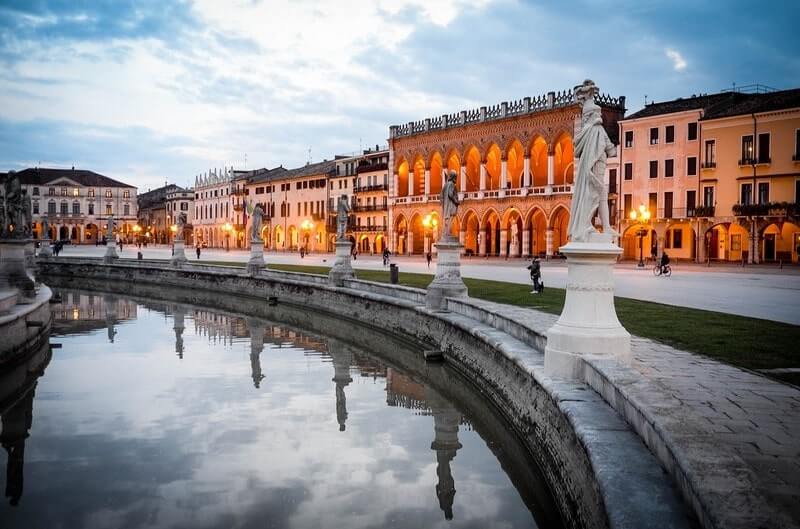
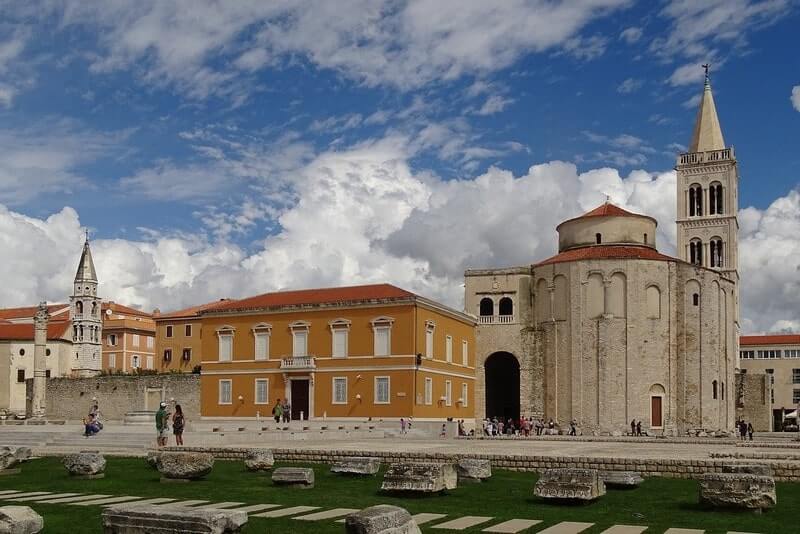
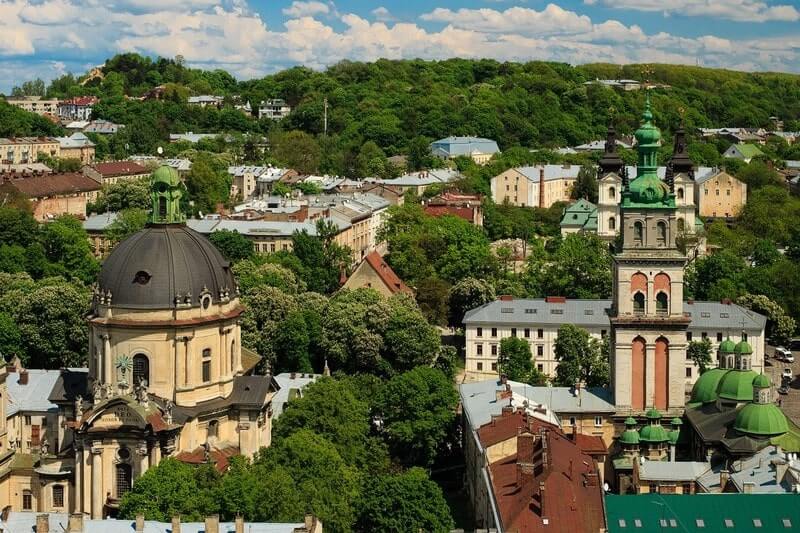
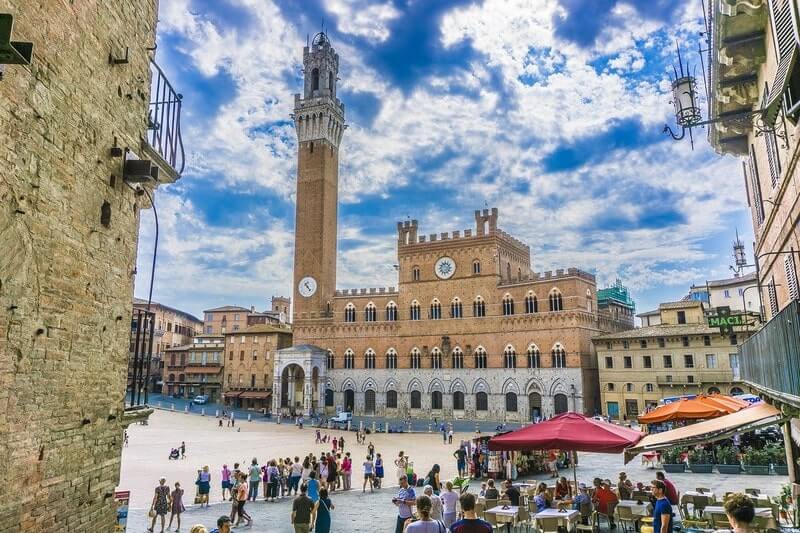
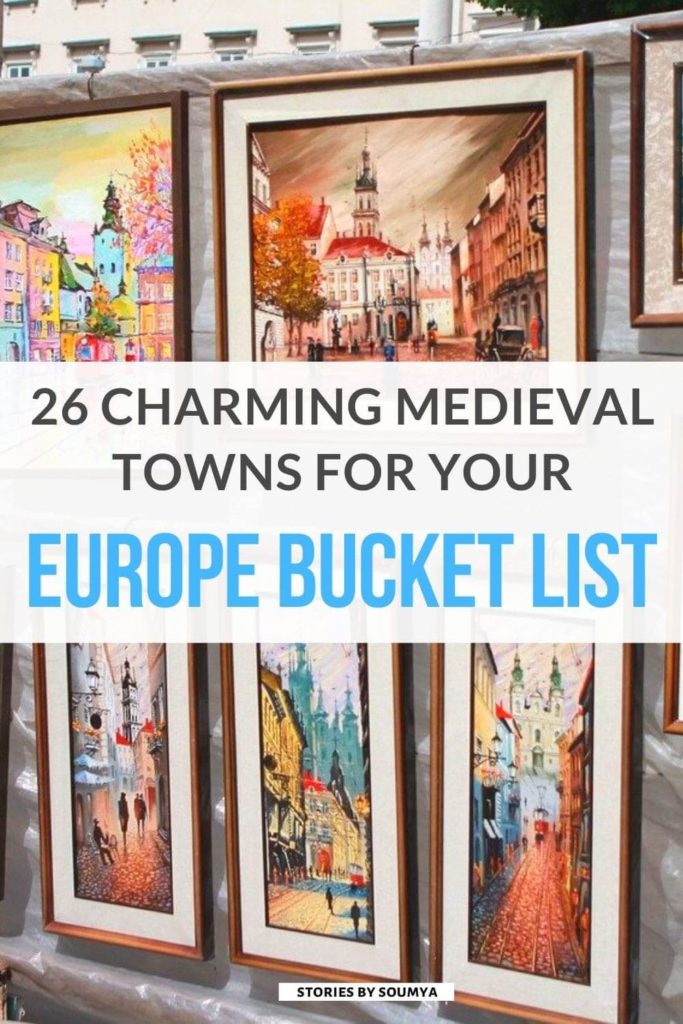

I always look forward to your post, you always seem to be able to find a way to make every time interesting and full of fresh content. i also write reviews on men women products on
buyzarasasta
Thats 20+ towns added to my Post COVID – 19 Travel Bucket List. Thanks for curating and compiling this awesome list Soumya.
You’re welcome, Arnav. So many beautiful places out there in Europe. You have given me serious wanderlust for Sighisoara with your contribution.
Lovely compilation of stunning picturesque towns of Europe apart from the very usual .. someday wish to travel throguh all
Same here, Debjani. Such quaint old towns. There’s just so much to see in this world.